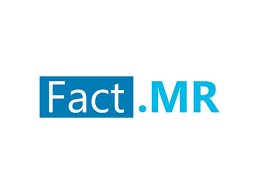Ultraviolet Stabilizers Market Outlook: Key Insights on Global Demand and Opportunities

The market for UV stabilizers is expected to be worth US$1.4 billion in 2023. The demand for ultraviolet stabilizers is predicted to grow at a compound annual growth rate (CAGR) of 5.3% over the following ten years, reaching an industry value of US$ 2.4 billion by the end of 2033.
Product/Technology Overview
Ultraviolet stabilizers are additives that help protect materials—especially plastics, coatings, and fibers—from the harmful effects of UV radiation. These stabilizers are commonly used in the automotive, packaging, agriculture, and construction industries to prevent photo-degradation. Three primary types of UV stabilizers dominate the market: UV absorbers, hindered amine light stabilizers (HALS), and quenchers. While UV absorbers physically absorb harmful rays, HALS act by neutralizing the free radicals generated from UV exposure. These additives play a vital role in ensuring that materials maintain their mechanical integrity, color, and aesthetic appeal over time.
As industries demand higher product performance and lifecycle sustainability, UV stabilizers have become integral to manufacturing processes involving polymers, textiles, paints, and coatings. The growing need to combat environmental wear and tear is fueling their global adoption.
Historical Growth & Market Trends
Over the past decade, the UV stabilizers market has seen consistent growth, driven largely by the increasing production of plastic-based materials used in outdoor environments. In recent years, demand has surged due to growing regulations around plastic waste and increasing expectations around material resilience. Between 2019 and 2023, the market showed stable expansion, backed by rising consumer preferences for high-performance materials, especially in construction, packaging, and automotive components. This upward trend is projected to continue as more industries adopt UV-resistant solutions in response to rising temperatures and longer sunlight exposure periods, largely driven by climate change.
Key Market Segments
The UV stabilizers market is segmented based on product type, application, and end-use industries. Among the different types, HALS dominate the market due to their long-term effectiveness in preserving material integrity. UV absorbers also hold a significant market share, especially in coatings and packaging applications.
By application, plastics take the lead, accounting for the largest portion of the market, as UV stabilizers are widely used to extend the life of plastic products exposed to sunlight. Packaging materials, especially those used for food and beverages, are a significant contributor due to rising concerns over product safety and shelf life. Construction and automotive are also fast-growing segments, as both industries require weather-resistant materials to maintain structural and aesthetic standards.
Regionally, North America and Europe have been mature markets with strict regulatory guidelines and high consumer awareness, while Asia Pacific is emerging as the fastest-growing region due to rapid industrialization, infrastructure development, and expanding manufacturing activities.
Growth Drivers
Several key factors are propelling the growth of the ultraviolet stabilizers market. One of the primary drivers is the increasing use of plastics across various sectors—particularly in packaging, construction, and automotive. Since most polymers degrade under UV exposure, the need for stabilizers to extend product lifespan has become critical. With global efforts pushing toward reducing waste and increasing recyclability, UV stabilizers help in improving product longevity, which aligns well with sustainability goals.
The construction industry’s rapid growth, especially in developing countries, is creating new demand for UV-resistant roofing, siding, and outdoor furnishings. Additionally, the agricultural sector’s use of plastic films for greenhouses and irrigation systems further supports the demand for UV stabilizers. Another significant growth driver is the increase in automotive production, where UV protection is essential for both interior and exterior plastic components.
Furthermore, regulatory guidelines aimed at reducing the environmental impact of materials encourage manufacturers to adopt UV stabilizers to ensure compliance with product durability and safety standards.
Challenges & Market Limitations
Despite strong growth, the UV stabilizers market is not without its challenges. One of the major limitations is the high cost associated with advanced stabilizer technologies, which can be a barrier for small and mid-sized manufacturers. The complexity of formulating UV stabilizers that are both effective and compatible with a wide variety of materials also presents technical challenges.
Moreover, environmental concerns around chemical additives in consumer products are leading to stricter regulations, particularly in Europe. Compliance with these evolving standards can increase production costs and slow down market penetration. Raw material price volatility, especially in petrochemical derivatives, also creates uncertainty in the supply chain, impacting pricing and availability for end-users.
Technological Innovations
To overcome these hurdles and meet growing demands, manufacturers are increasingly focusing on innovation. The development of bio-based and environmentally friendly UV stabilizers is gaining attention, aligning with global sustainability efforts. Companies are also working on multifunctional stabilizers that combine UV resistance with anti-oxidative or flame-retardant properties, offering more value in a single additive.
Nanotechnology is another promising frontier, with nano-UV stabilizers showing enhanced dispersion, better transparency, and superior UV resistance. These advancements not only improve performance but also reduce the quantity of additive needed, lowering costs and environmental impact. Additionally, smart stabilizers that adapt their activity based on UV intensity are being explored for advanced applications.
Regional Insights
Asia Pacific is the standout region in terms of growth rate, driven by strong industrial development in countries like China, India, and Southeast Asia. The increasing use of UV stabilizers in the packaging, construction, and automotive
- Information Technology
- Office Equipment and Supplies
- Cars and Trucks
- Persons
- Books and Authors
- Tutorials
- Art
- Causes
- Crafts
- Dance
- Drinks
- Film
- Fitness
- Food
- Juegos
- Gardening
- Health
- Home
- Literature
- Music
- Networking
- Other
- Party
- Religion
- Shopping
- Sports
- Theater
- Wellness



